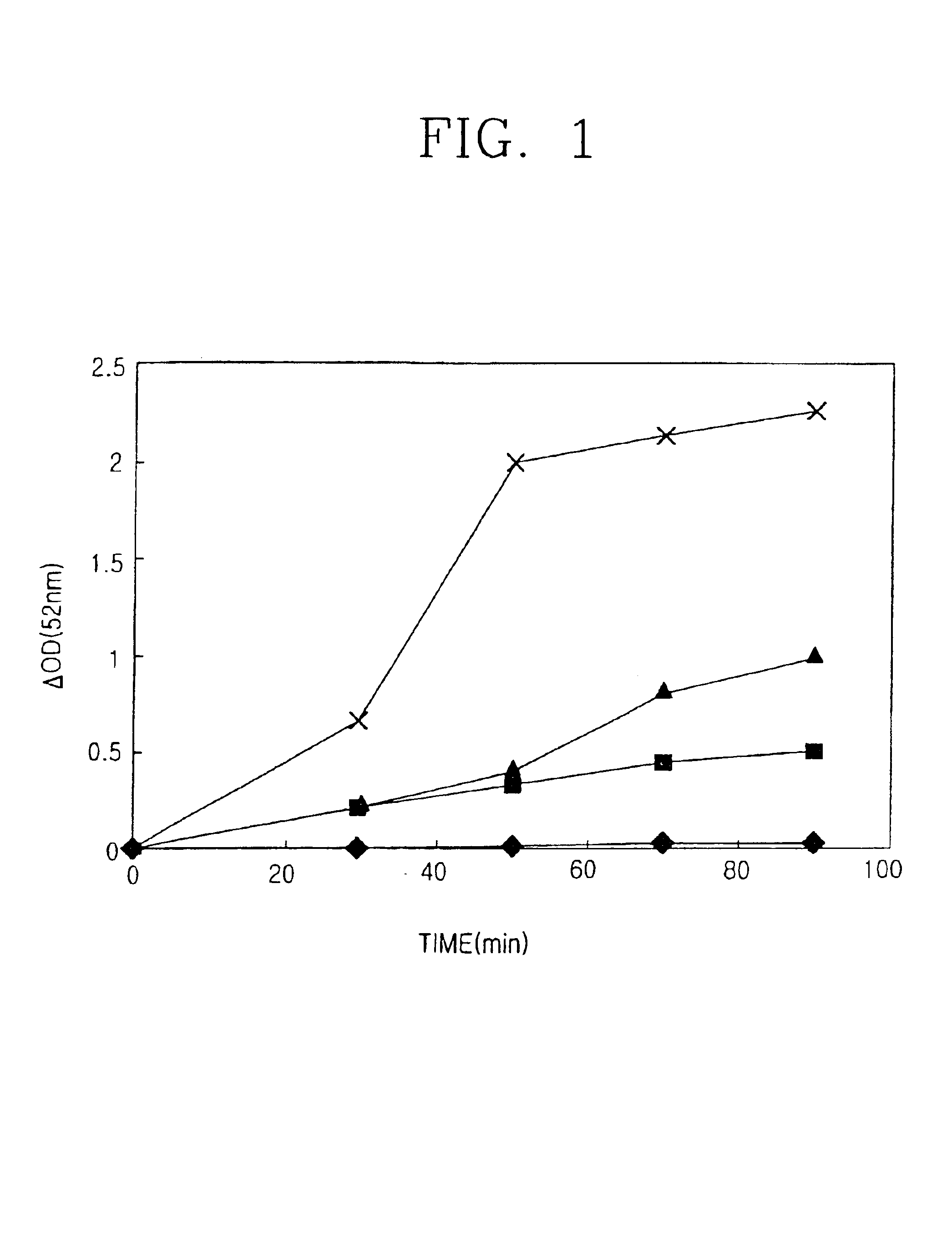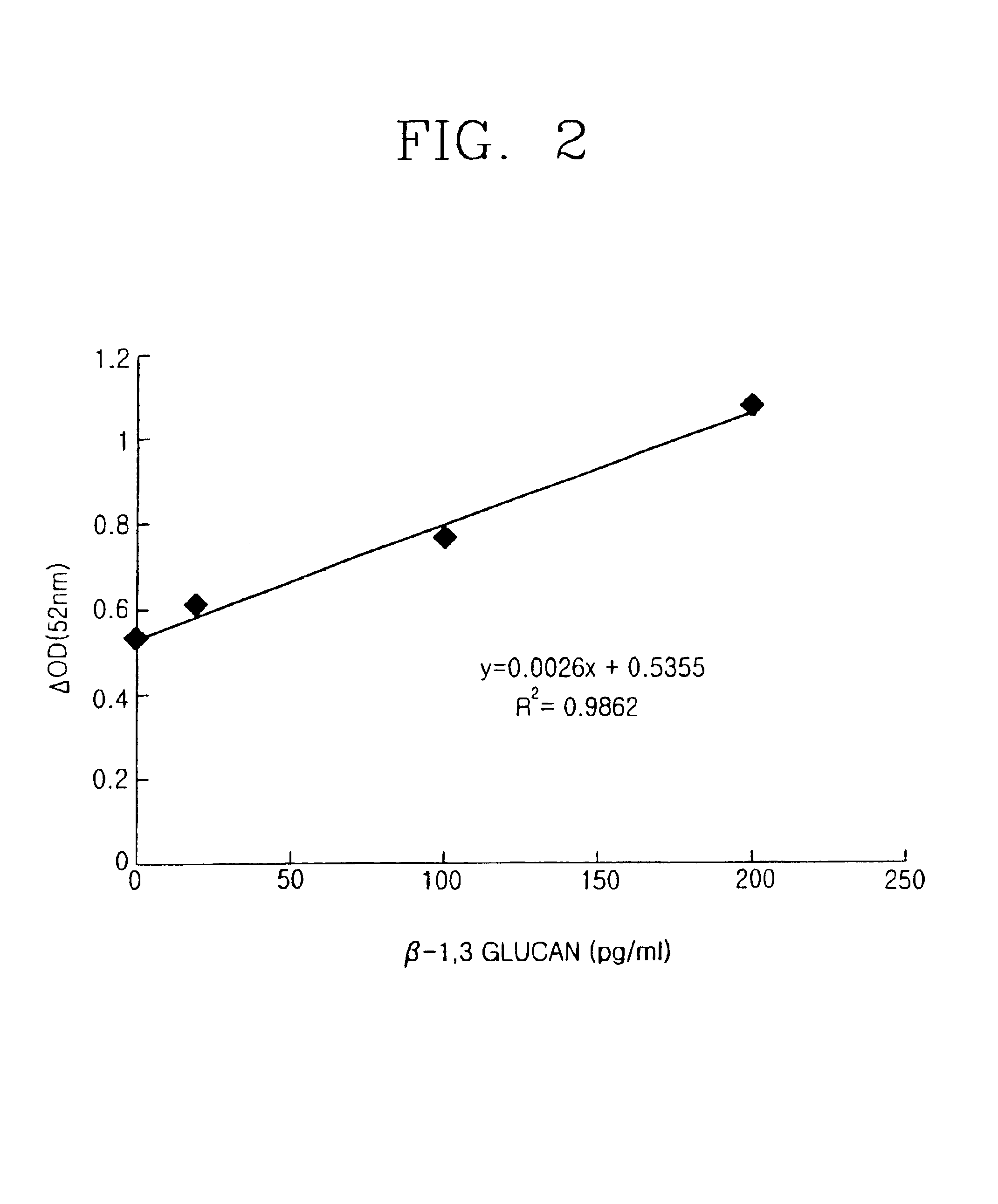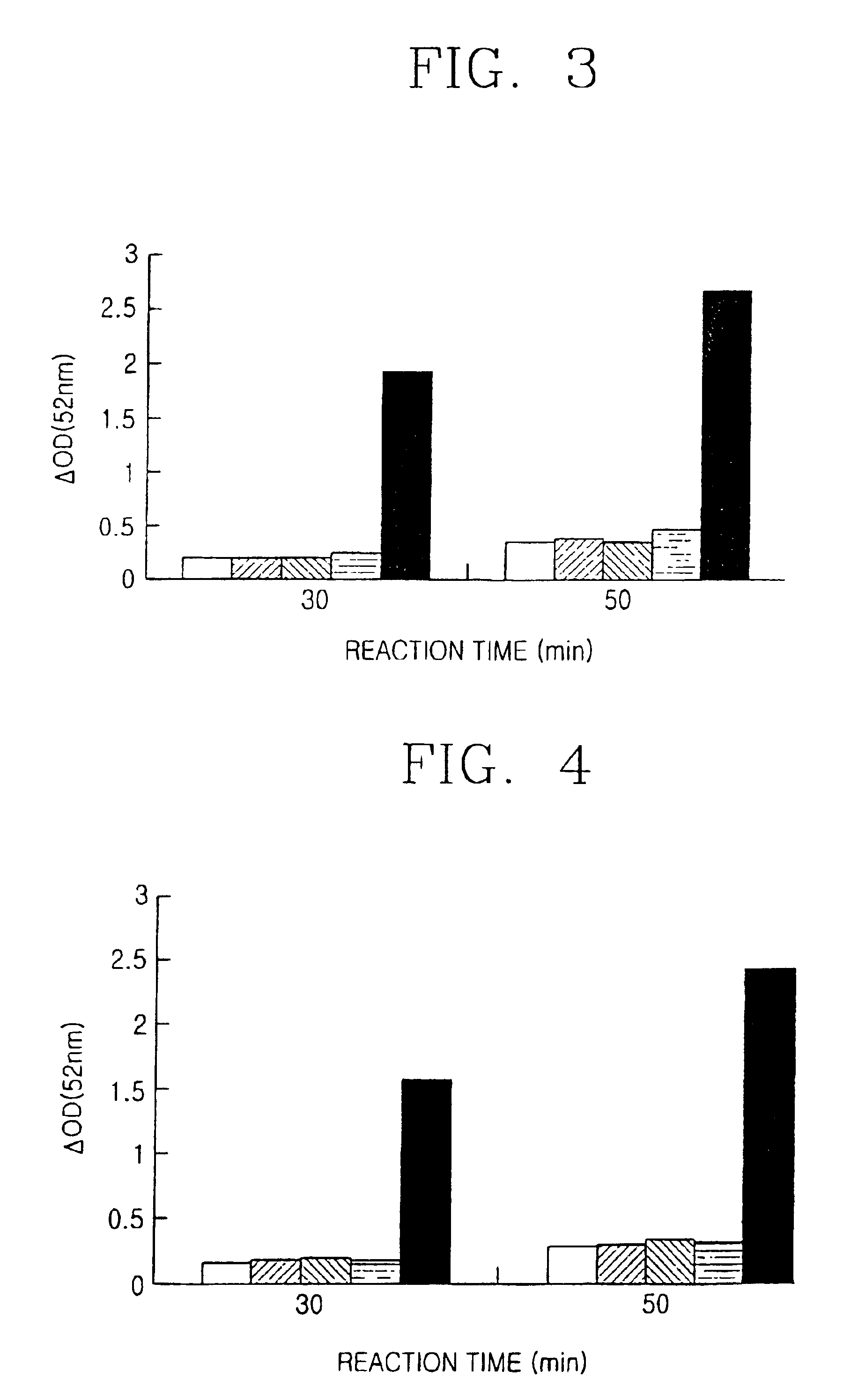Composition for detecting beta-1,3-glucan
a technology of glucan and beta-1,3-glucan, applied in the direction of ion-exchangers, other chemical processes, microorganism lysis, etc., can solve the problems of increasing the risk of bacterial infection or protozoa infection, and the difficulty of analyzing all the metabolites, and the difficulty of early diagnosis
- Summary
- Abstract
- Description
- Claims
- Application Information
AI Technical Summary
Benefits of technology
Problems solved by technology
Method used
Image
Examples
example 1
[0058]The larvae of Tenebrio molitor were anesthetized on ice. Three drops of hemolymph were collected in each of larvae by inserting a 25 G needle connected to a 5 ml sterile syringe containing anticoagulation buffer solution into the first segment from the head. After centrifuging 60 ml of collected hemolymph for 4 h at 4° C. at 203,006 g, 55 ml of sample was obtained by filtering (0.45 μm) the supernatant to eliminate the impurities This sample was concentrated to 3 ml by ultrafiltration (cut off: 10,000). After packing Toyopearl HW-55S resin into a 1×50 cm column, the column was washed with a sufficient amount of anticoagulation buffer solution. After loading the concentrated sample into the column, an anticoagulation buffer solution was added and eluted at 0.18 ml / min flow rate. The eluant was collected to the volume of 3.8 ml each, and the absorbance was measured at 280 nm to check the protein concentration. By performing the 4-MC / 4-HP color development reaction using β-1,3-gl...
example 2
[0061]To check whether the phenoloxidase composition in Example 1 had the specificity to β-1,3-glucan, the phenoloxidase activity was determined by using lipopolysaccharide and peptidoglycan. Lipopolysaccharide (Sigma Chemical Company) and peptidoglycan (Sigma) were each suspended in 50 mM of Tris buffer solution (pH 7.0). As substrates, peptidoglycan suspension was used as it is and lipopolysaccharide suspension was used after sonication for 2-3 min. By using lipopolysaccharide at 200 pg / ml, 20 ng / ml, 20 μg / ml concentrations as substrates, the color development reaction with 4-MC / 4-MP solution was carried out by using phenoloxidase composition at 5 mM Ca2+. The color was compared with the color developed from the experiment using 20 ng / ml of β-1,3-glucan as a substrate. The result is shown in FIG. 3 (: negative control having phenoloxidase composition and Ca2+ (A hereinafter), : A+lipopolysaccharide 200 pg / ml, : A+lipopolysaccharide 20 ng / ml, : A+lipopolysaccharide 20 μg / ml, ▮: A+β...
example 3
[0069]To check whether the phenoloxidase composition had specificity to β-1,3-glucan, melanin formation reactions were carried out using various sugars according to the method described above. The results of measuring the absorbance at 400 nm to determine the amount of produced melanin showed that melanin production was observed significantly in the presence of β-1,3-glucan only. The results are summarized in Table 1.
[0070]
TABLE 1SaccharideBond typeAbsorbance (400 nm)D (+) glucose0.211Celluloseβ-1,40.240Maltoseα-1,40.237Dextranα-1,60.290Laminarinβ-1,3, β-1,60.292Zymosanβ-1,33.616Curdlanβ-1,33.35220 mM Tris (pH 8.0)0.208
PUM
| Property | Measurement | Unit |
|---|---|---|
| concentrations | aaaaa | aaaaa |
| time | aaaaa | aaaaa |
| concentration | aaaaa | aaaaa |
Abstract
Description
Claims
Application Information
 Login to View More
Login to View More - R&D
- Intellectual Property
- Life Sciences
- Materials
- Tech Scout
- Unparalleled Data Quality
- Higher Quality Content
- 60% Fewer Hallucinations
Browse by: Latest US Patents, China's latest patents, Technical Efficacy Thesaurus, Application Domain, Technology Topic, Popular Technical Reports.
© 2025 PatSnap. All rights reserved.Legal|Privacy policy|Modern Slavery Act Transparency Statement|Sitemap|About US| Contact US: help@patsnap.com



